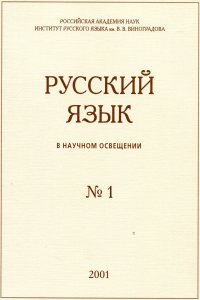Variation of the letters е and ѣ in the Office Menaion of the early 12th century (RNL, Sof. 188)
Abstract:
In early Old Russian writing there were two types of spelling systems in which there was confusion of letters е and ѣ: the main one with the substitution ѣ > е in a specific set of positions, and the rarer one with frequent interchange of the two letters; the latter has not yet been the subject of a special study. This article discusses features of the spelling system of the second type found in the manuscript Sof. 188. Analysis of complete sampling of material on variation of the letters е and ѣ in the manuscript shows that the bulk of the letter substitutions is of a systemic nature. In spite of the fact that letter substitution occurs in general in the manuscript in a large number of morphemes, it predominates in those positions which directly correspond to the standard ones. The scribe of Sof. 188, proceeding from a well-known set of standard positions, applies the same operation of the letter exchange to a larger circle of morphemes and stems. For example, he extends the substitution рѣ, лѣ > ре, ле found in *tert-reflexes to any syllable рѣ, лѣ regardless of etymology; he transfers the obligatory replacement in the root of oblique forms of the noun тѣло ‘body’ to all *es-stems, etc.
The emergence of such a non-standard spelling system is comparable to a number of phenomena in the Old Russian orthography of the 11th – the first half of the 12th centuries, associated with elimination of Old Bulgarian features.


